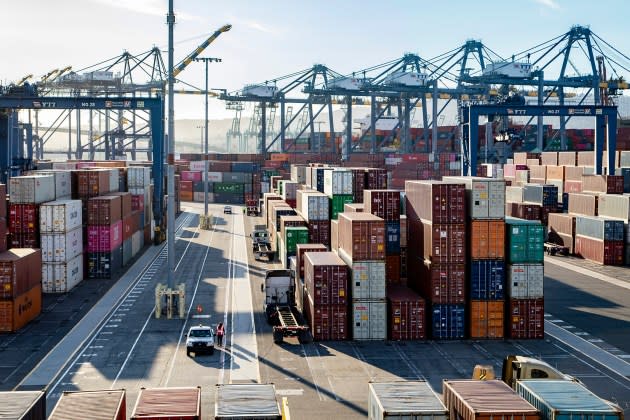Peak Shipping Season Gets Off to a Modest Start

Traditionally, August is the beginning of peak shipping season for retailers stocking up for the holidays, but that doesn’t seem to be the case if you look at the cargo containers arriving at the massive Southern California port complex.
At the Port of Long Beach, the number of cargo containers arriving on the docks in August declined 15.4 percent from the same time last year while exports were down 23 percent. “We anticipated a modest peak season as our cargo numbers continue to stabilize at pre-pandemic levels,” said Port of Long Beach chief executive officer Mario Cordero.
More from WWD
Next door at the Port of Los Angeles, August cargo container import traffic inched up 7.3 percent, the first gain in 13 months. But the port’s executive director, Gene Seroka, said some of that increase was helped by a new six-year labor contract recently approved between the 22,000 members of the International Longshore Workers Union and the Transpacific Maritime Association, which represents 70 shipping companies and terminal operators employing the workers.
Still, total cargo container traffic for the first eight months of this year at the Port of Los Angeles was down 21 percent compared to last year. During that same period, the Port of Long Beach saw its cargo container traffic slip 24 percent.
High inventory levels at local warehouses is one of the reasons imports are down in Southern California where there is 2 billion square feet of warehouses stretching 70 miles from the Pacific Ocean east to Riverside County. “Warehouse inventories across the United States remain elevated. That’s evident from the federal government’s inventory sales ratio, which remains at 1.40. That means we have 40 percent more inventory behind everything we sell,” said Seroka, speaking Thursday at the port’s monthly news conference. “Experts would like to see this at about 10 percent.”
Southern California’s warehouses have only a 4 percent vacancy rate, but could become more crammed with merchandise because consumer spending is up slightly over last year.
“American consumers remain resilient and continue to spend, just not at the levels we saw during the pandemic,” said Seroka, noting that U.S. Department of Commerce figures show retail sales in August up 0.6 percent over July.
Ever since the beginning of 2020, Southern California’s two ports have gone through a boom/bust cycle. When the COVID-19 pandemic curtailed imports because overseas factories shut down or limited their production, cargo container traffic coming from Asia dwindled to a crawl. Then when factories and businesses went back to work, there was a cargo surge with pent-up demand for merchandise. At one time there were so many ships crossing the Pacific Ocean that in early 2022 more than 100 vessels were anchored off the Southern California coast, waiting to dock.
Trade started to return to normal last summer, but the protracted labor negotiations between the longshore workers and their employers dragged on for more than a year until a settlement was reached in June and a contract approved in early September.
That labor dispute prompted many shippers to abandon Southern California’s ports and opt for East Coast and Gulf state ports. Now Southern California ports account for only 32 percent of all cargo container traffic coming into the U.S., down from 40 percent about a decade ago.
To recoup that business, executives at the two Southern California ports are crisscrossing the globe to visit shippers in Asia and retailers in the U.S., asking them to return to the West Coast. “Our message is this,” Seroka said. “We are operating on all cylinders.”
Best of WWD
